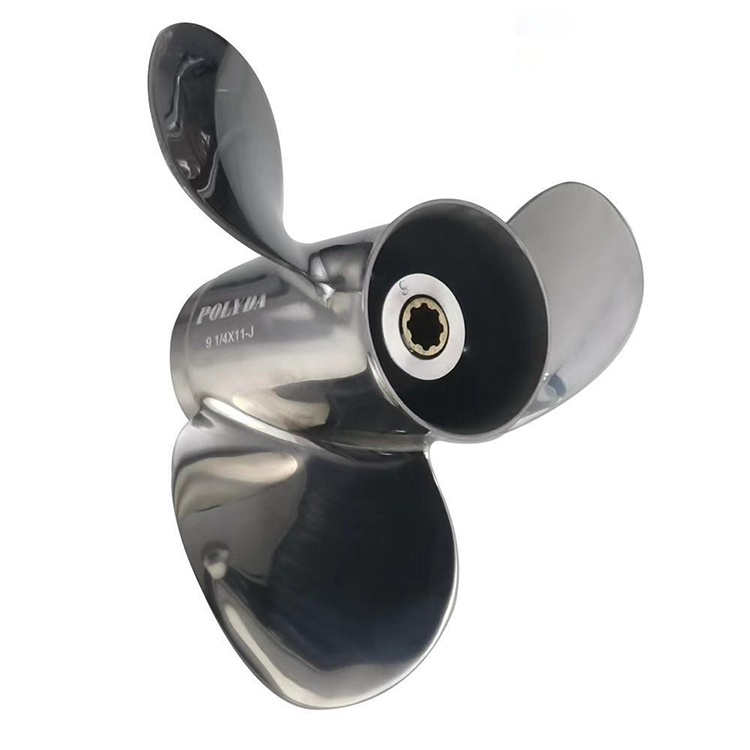Mechanical collision: hitting a reef, colliding with floating objects.

Cavitation corrosion: Long-term cavitation causes the blade surface to peel off.
Fatigue fracture: Material defects or long-term alternating stress.
Electrochemical corrosion: Seawater electrolysis, especially when different metals are in contact (such as copper propeller + steel shaft).
Repair method:
Minor damage can be repaired by welding and then polished.
Severe deformation or fracture requires replacement of the propeller.
The maritime industry is at the forefront of innovation, with advancements in propulsion systems being a key area of focus. Among these advancements, composite marine propellers and high-performance boat props stand out for their contributions to efficiency and performance.
Composite materials have revolutionized the marine industry, offering a range of benefits over traditional materials like wood, steel, and aluminum. Composite marine propellers are typically made from a combination of materials that provide strength, durability, and corrosion resistance, all while being lightweight.
Fiberglass reinforced plastics (FRP) are a common choice for composite propellers due to their high strength-to-weight ratio and resistance to both corrosion and fatigue. The glass fibers are embedded in a plastic matrix, which can be made from various types of resins, including polyester, vinyl ester, and epoxy.
Carbon fiber composites are another popular option for high-performance applications. They are incredibly strong and lightweight, making them ideal for applications where weight savings are crucial for performance. The downside is their higher cost compared to other composite materials.
In some cases, manufacturers use hybrid materials that combine the benefits of different composites. For example, a propeller might have a carbon fiber core for strength and a glass fiber exterior for durability, creating a propeller that is both strong and resistant to damage.
High-performance boat props are designed to maximize the efficiency of a boat's propulsion system. The propeller is the final link in the power transmission chain, converting the rotational energy from the engine into forward thrust. Its design and material directly impact the boat's speed, fuel consumption, and overall performance.
The hydrodynamic design of high-performance boat props is crucial for optimizing performance. The shape, pitch, and diameter of the propeller all influence how effectively it can convert engine power into thrust. Advanced design software and computational fluid dynamics (CFD) simulations are used to create propellers that minimize cavitation and maximize efficiency.
The material of high-performance boat props is chosen based on the specific needs of the vessel. Stainless steel is a popular choice for its strength and resistance to corrosion, making it suitable for saltwater environments. Nickel aluminum bronze is another option, prized for its high strength and ability to withstand high loads.
High-performance boat props are often customized to fit the specific needs of different vessels. This can include variations in pitch, rake (the angle at which the propeller is set), and number of blades. Customization allows boat owners to optimize their propulsion systems for their specific uses, whether that's speed, maneuverability, or fuel efficiency.
High-performance boat props can also contribute to environmental performance by reducing fuel consumption and emissions. By improving the efficiency of a boat's propulsion system, these props can help vessels travel farther on less fuel, reducing their carbon footprint.
Another role of high-performance boat props is noise reduction. By optimizing the propeller's design, manufacturers can reduce the noise produced by the propeller, which is especially important for vessels that operate in environmentally sensitive areas or near populated areas.
The materials of composite marine propellers and the role of high-performance boat props are integral to the advancement of the maritime industry. High-performance boat props, with their focus on hydrodynamic design and material selection, play a crucial role in optimizing a boat's propulsion system, better performance and reduced environmental impact. As technology continues to advance, the development of new materials and propeller designs will undoubtedly continue to push the boundaries of what is possible on the water.